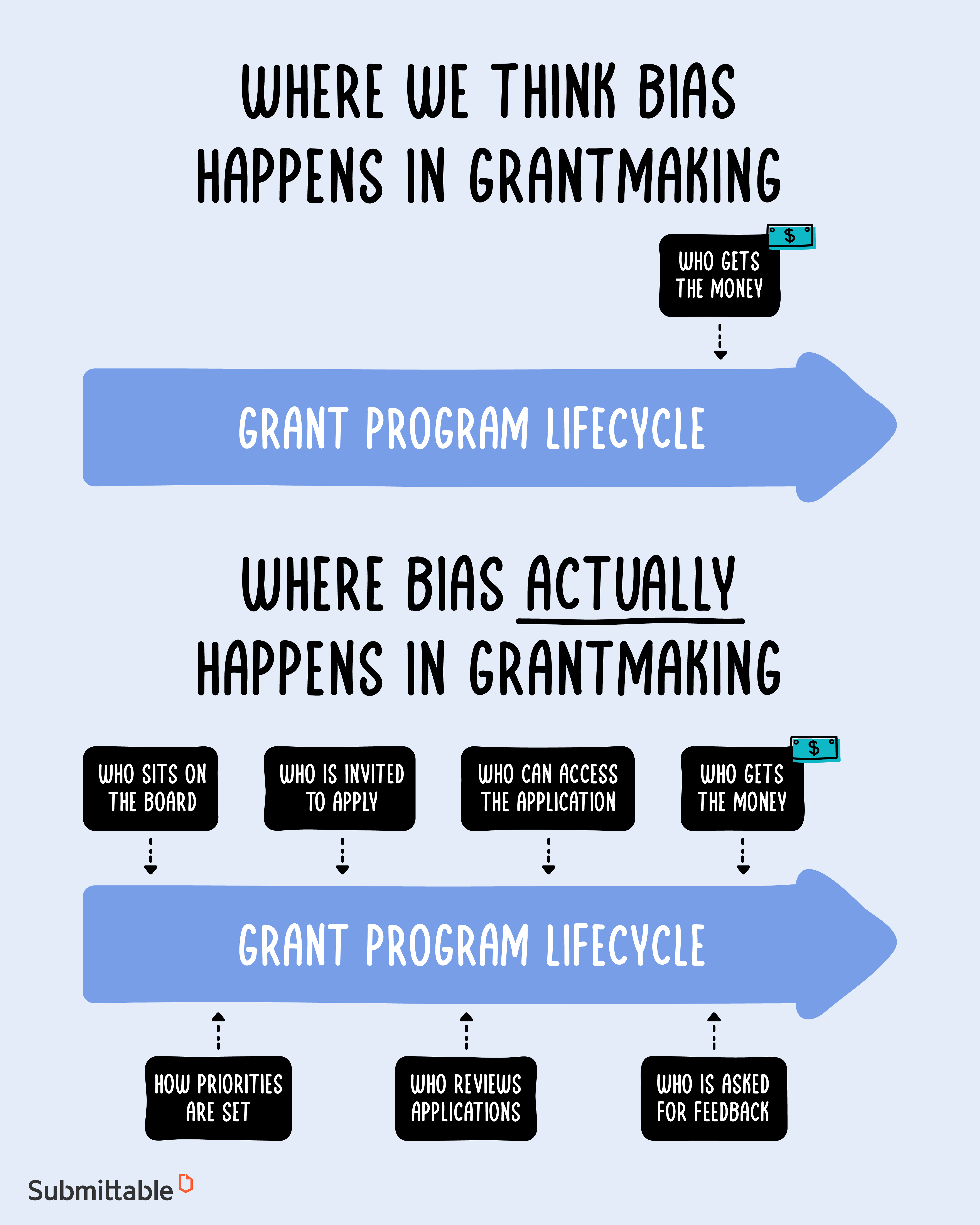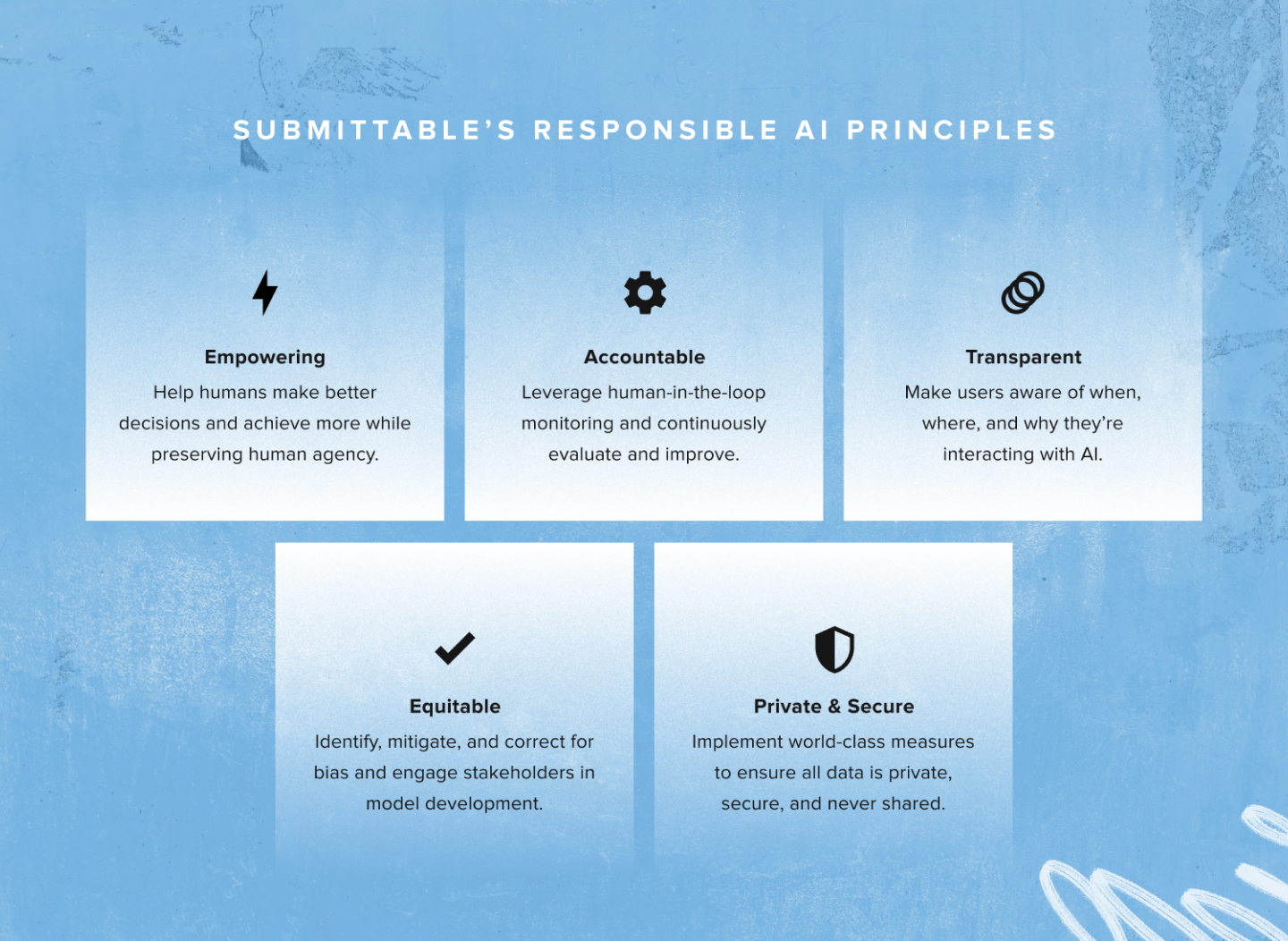Philanthropy moves from intention to execution

Shifting from ideas to tactics
One thing the philanthropic sector doesn’t lack is ideas. In the last year or so, the sector has made great strides in creating moral clarity with big concepts and new technology. For many foundations and nonprofits, though, the next steps are tactical: intentionally executing on these concepts.
AI: The new potential
AI is perhaps the hot topic in the sector. There is a lot of hope that philanthropy can leverage AI for good: we see excitement about the potential of AI to eliminate tedious work for nonprofits, and optimism about the significance for the same outcomes for their grantees and applicants.
Integration and utilization of AI is definitely a bit topic for our organization and our industry.
Jodi Samuels, Senior Director, Foundation for California Community Colleges (Submittable customer)This potential carries a special weight at this moment. With macroeconomic volatility and political uncertainty, many nonprofit organizations are concerned that their funding may be at risk and they’ll need to make every dollar count.
Meanwhile, grantmakers are seeing a steep increase in the need for support among potential grantees. Submittable clients have told us their top concern is not being able to support every qualified applicant.
Into these murky waters, the potential of AI to stretch dollars further becomes ever more hopeful. But also top of mind for philanthropists are AI’s inherent risks.
How the Low Income Investment Fund leverages Automated Review to save time and focus on building grantee relationships
How LIIF leverages Automated Review to save time and focus on building grantee relationships
Applicant experience is critical and it's our ultimate goal to make sure that they feel like they can come back and do it again if another opportunity arises…It's to our benefit to make this product work for us and for our applicants because it builds trust.
Laura Jackman, Director of Capacity Building, Low Income Investment Fund12k
Applicants since 2022
4-5
Hours saved per week, per program manager
AI: The new concern
Funders are extremely concerned about the dangers of AI: the potential to introduce or reinforce bias, inequity, or inaccurate data. These concerns increase when it comes to the ultimate impact upon grantees and who receive funding.

So, the question on everyone’s mind is, in what specific and practical ways can you adopt AI responsibly? We recommend beginning with TAG’s recently released Responsible AI Adoption In Philanthropy Framework. Here, you can find practical advice for adopting AI, both as an individual and within your organization.
Another key step to take today is to evaluate your vendor and their approach to AI. As Devi Thomas from Microsoft articulates in the clip above, there’s simply “no part of artificial intelligence that doesn't need human intelligence”.
As a pioneer in this innovation for the sector, via our partnership with Microsoft and otherwise, Submittable believes our responsibility is to ensure that humans maintain the power in the deployment of all AI powered tools. That’s why we have a set of Responsible AI Principles guiding our development.
Our Responsible AI Principles

Customer Spotlight: United Way
How United Way drove 120% more engagement by optimizing the applicant experience
We are really thankful for how easy it is to build an application that theorizes how we want to distribute resources across our community… We can show up how we want to, without the tool dictating what we can ask and how we want to ask it, and lets us achieve our goal of a less burdensome and bulky experience.
Jeff Howell, Director, Community Investment, United Way of the Greater Triangle120%
Growth in applications over a four year period with Submittable
Impact measurement begins with easy access to data
3/4
Customers who use Submittable’s reporting tools achieve one or more of these benefits: Perform data analysis Identify insights/make data-driven decisions Compliance/audit preparedness Answer stakeholder questions
Moving from big concepts to concrete action
Moving on to the next hottest topic, trust-based philanthropy. We’ve observed a paradox between how often it’s discussed, and the extent to which it has been fully embraced and practiced.
It’s different for every funder, but we see grantmakers advocating more strongly for the adoption of trust-based practices, like multi-year grants and unrestricted funding.
With such flexible application creation, we can quickly create bi-lingual applications. We also implemented an option for individuals to answer narrative questions via either written answers or with uploaded videos of them verbally answering questions.
Samantha Kimpel, Interim Director, Creative Sonoma (Submittable customer)They’re also advocating for the adoption of tech tools that support strong relationships with grantees and reduced applicant and awardee burden—like accessible portals, diverse file uploads, mobile-friendliness, and more. These are tactics that as a grantmaker, you can adopt today with the right set of tools.
A trust-based approach extends to measuring impact, as well. A key step here is to question the fundamental goal of measuring impact: is it to extract and analyze data, or is it to learn what is working and what is not? This framework, designed by Brenda Solorzano of Headwaters Foundation and offered by the Trust-Based Philanthropy Project and Center for Evaluation Innovation, is a great place to start.
Thank you for making progress happen
We know how committed nonprofit professionals are—they’re out there everyday, living their values and doing the good work. We see it as our mission to develop the tools to support you now, and into the future, as you continue to execute on your good intentions. Thanks for all you do.
Read Next Chapter